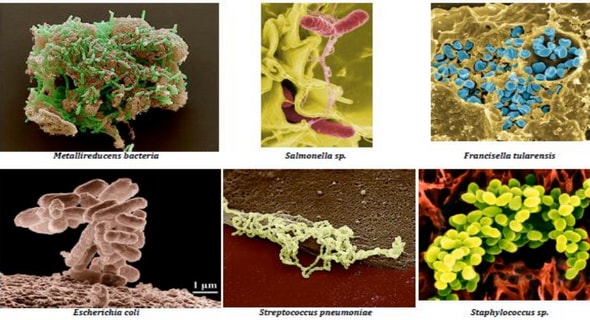Les concentrations plasmatiques de PCSK9 sont positivement associées au taux de production des lipoprotéines riches en triglycérides contenant l’apolipoprotéine B-48 chez les hommes
Material and methods
This study was a cross-sectional analysis of data from male subjects who participated in in vivo tracer kinetic studies in our laboratory.22-30 Only data from subjects who were either on no particular treatment,22, 28 a control diet26, 27, 29 or on a placebo23-25, 30 in the previous studies were used for the present analyses. These studies were approved by the Laval University Ethical Review Committee, and written consent was obtained from all subjects.
Study Subjects
Male subjects (n=148) with various degrees of IR compose the current sample. None of the subjects had symptomatic cardiovascular disease, monogenic hyperlipidemia, an acute inflammatory state (evidenced by the presence of fasting CRP levels > 10 mg/dL),30 type 1 diabetes, insulin therapy, acute hepatic or renal disease, cancer history, uncontrolled arterial hypertension, and recent history of drug or alcohol abuse. Subjects with type 2 diabetes (T2D) (n=28), as defined by the American Diabetes Association,31 were receiving stable dose of metformin for at least 3 months prior to the clinical assessments. All subjects were withdrawn from lipid-lowering medication for at least 6 weeks prior to kinetic studies.
Biochemical measurements
Fasting blood samples were collected after a 12 hour fast prior to the beginning of the kinetic study in tubes containing disodium EDTA and benzamidine (0.03%).32 Blood lipids were measured using enzymatic methods and ultracentrifugation as previously described.33 Glucose levels were measured using colorimetry, and insulin levels were examined using electrochemiluminescence (Roche Diagnostics, Indianapolis, IN, USA). Commercial enzyme-linked immunosorbent assay kits were used to measure plasma levels of CRP (Biocheck Inc., Foster City, CA, USA) and PCSK9 (Circulex, CycLex, Nagano, Japan).
Experimental Protocol for In Vivo Stable Isotope Kinetic Study
Subjects underwent a primed constant infusion of L-[5,5,5-D3]leucine while they were maintained in a constant fed state. Starting at 7:00 AM, the subjects received 30 small, identical snacks every half hour for 15 hours, each containing 1/30th of their estimated daily food intake based on the Harris-Benedict equation. The following three types of snacks were used during the experimental protocol:
1) low-fat (22.4% of total caloric intake from fat), 2) moderate-fat (35.1% of total caloric intake from fat) or 3) high-fat (41.1% of total caloric intake from fat). At 10:00 AM, L-[5,5,5-D3]leucine (10 μmol/kg body weight) was injected as a bolus intravenously and then by continuous infusion (10 μmol/kg body weight/h) over a 12 h period. Blood samples were collected at 0.5, 1, 1.5, 2, 3, 4, 5, 6, 8, 10, 11, and 12 h.
Quantification and Isolation of apoB-48
In 105 subjects, VLDL apoB-100 and TRL apoB-48 were isolated from plasma by ultracentrifugation (d < 1.006 g/mL). VLDL apoB-100 and TRL apoB-48 were subsequently separated using SDS-PAGE according to standardized electrophoresis procedures. Densitometry was used to measure the relative proportion of apoB-48.34,35 Three different time points were scanned to estimate the average concentration of apoB-48 and to confirm steady states.
In 43 subjects, TRL apoB-48 concentration was determined using a noncompetitive enzyme-linked immunosorbent assay kit (Shibayagi Co. Ltd., Gunma, Japan).36 The assay was calibrated according to manufacturer’s instructions. The within assay variation was 3.5% and the between assay variation was 2.8-8.6%. Three different time points during the infusion protocol were also used to estimate the average concentration of apoB-48 and to confirm steady states.
The two methods are well correlated (r=0.59, P<0.01).38 Sensitivity statistical analyses were conducted to confirm that current observations were not modified by the method used to quantify apoB-48.
Isotopic Enrichment Determinations
The isotopic enrichment of leucine in apoB-48 was determined using gas chromatography-mass spectrometry in 105 subjects (including n=12 with T2D) and using liquid-chromatography with multiple reaction monitoring in 43 subjects (including n=16 with T2D). These two procedures have been previously described and are highly correlated (r=0.99, P<0.0001).30 Sensitivity statistical analyses were conducted to confirm that current observations were not modified by the method used to determine the isotopic enrichment of leucine in apoB-48.
Kinetic Analysis
The TRL apoB-48 FCR (pools/d) was derived using a multi-compartmental model previously described.39 We assumed a constant enrichment of the precursor pool and used the TRL apoB-48 plateau tracer/tracee ratio data as the forcing function to drive the appearance of tracer into apoB-48.39 Assuming that each subject remains in steady state with respect to apoB-48 metabolism during the study as previously shown,39 the FCR is equivalent to the fractional synthetic rate. The apoB-48 PR was determined using the following formula: PR (mg/kg/d) = [FCR ● apoB-48 concentration (mg/dL) ● plasma volume (L)] / body weight (kg).40 The plasma volume was estimated at 4.5% of body weight. The SAAM II program (SAAM Institute, Seattle, WA, USA) was used to fit the model to the observed tracer data.
Intestinal biopsies and extraction and quantification of total RNA
In a subgroup of 71 nondiabetic subjects, duodenal biopsies were collected from the second portion of the duodenum during gastroduodenoscopy after a 12 h fast in a delay ranging from 24 to 48 h of the kinetic study. The procedure was conducted in the fasting state and limited to the second portion of the duodenum to avoid complications (e.g. pulmonary aspiration, perforation).
Samples (3 x 3 mm) were collected using single-use biopsy forceps, immediately flash frozen in liquid nitrogen and stored at -80°C before RNA extraction. Intestinal tissue samples were homogenized in 1 mL of Qiazol (Qiagen, Hilden, Germany). RNA was extracted using a RNeasy kit (Qiagen, Hilden, Germany). To eliminate any contaminating DNA, biopsies were treated with RNase-free DNase. Total RNA extraction and quantitative real-time polymerase chain reaction (PCR) were performed using standard procedures as previously described.27 Primer sequence and gene description are provided in Supplemental Table 1. Expression of the house-keeping gene, glucose-6-phosphate-dehydrogenase (G6PD), was used as reference. Quantitative real-time PCR measurements were performed by the CHU de Québec-Université Laval Research Center Gene Expression Platform (Quebec, Canada).
Minimal detectable association calculation
Minimal detectable association calculation was first conducted on the expected association between plasma PCSK9 concentrations and TRL apoB-48 FCR as the primary outcome. Our calculation indicated that a sample size of 148 subjects would allow us to detect a correlation coefficient of 0.232 or greater with a power of 80% at a two-sided 0.05 significance level, with the conservative assumption that the standard deviation of plasma PCSK9 concentrations and TRL apoB-48 FCR is 50% of the mean. This calculation is consistent with the previous study by Chan et al.14 where an inverse association between PCSK9 levels and TRL apoB-48 FCR (standard β: -0.589) was observed in 17 obese subjects.

